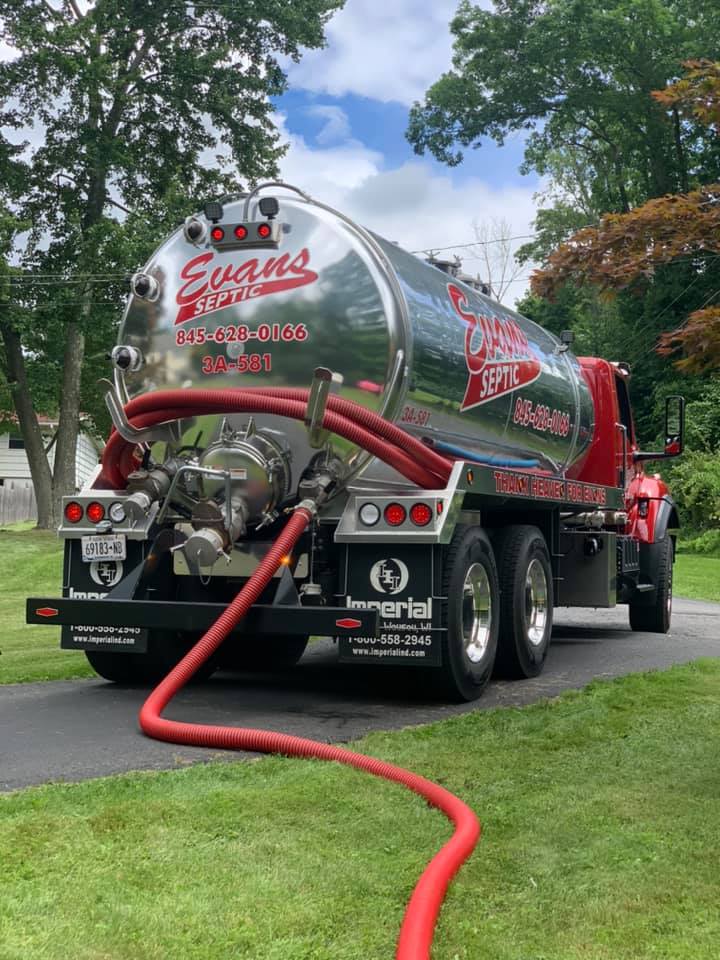What Does Stillwell Septic And Grading Mean?
What Does Stillwell Septic And Grading Mean?
Blog Article
Our Stillwell Septic And Grading Statements
Table of ContentsStillwell Septic And Grading Things To Know Before You Get ThisStillwell Septic And Grading Can Be Fun For AnyoneThe 6-Minute Rule for Stillwell Septic And GradingExcitement About Stillwell Septic And GradingNot known Facts About Stillwell Septic And GradingSee This Report on Stillwell Septic And GradingSome Ideas on Stillwell Septic And Grading You Need To Know

Property owners need to additionally educate themselves on the basics of septic systems to ensure they make informed choices throughout the installation process - Septic Tank Pumping. Septic systems are a vital part of several homes that are not attached to a metropolitan drain system. They are developed to treat and deal with house wastewater on-site
The septic container is a big, underground container made of concrete, fiberglass, or plastic. The container separates the solid waste from the fluid waste.
Stillwell Septic And Grading - An Overview
It is also vital to preserve water and stay clear of overwhelming the system. Simple measures such as taking care of leaking faucets and commodes, setting up low-flow showerheads and bathrooms, and spreading out washing lots can help reduce water usage and extend the life of the septic system.
The topography of the site is additionally examined to ensure that the septic tank is installed at the correct altitude. https://filesharingtalk.com/members/593615-stillwellsag. The system must be set up at a greater altitude than the bordering location to avoid contamination of the surrounding environment. Setbacks are the minimum ranges needed by legislation in between the septic system and other structures or attributes such as wells, structures, and residential or commercial property lines
The recommended altitudes of the system are identified based upon the results of the dirt evaluation and topography analysis. The altitudes will certainly make certain that the septic tank functions correctly, and wastewater is efficiently treated - Setpic System Repairs. In verdict, a site assessment is an important action in sewage-disposal tank installment. It makes certain that the septic system is installed in the most optimal location, taking into consideration the soil, topography, and setbacks.
7 Easy Facts About Stillwell Septic And Grading Shown
Prior to installing a septic tank, home owners need to obtain licenses and comply with policies. Some of the licenses and guidelines that property owners require to consider consist of:: Homeowners require to obtain a permit from the regional health division or structure department prior to installing a septic system.
As an example, some districts may require a minimal whole lot size for septic system installation.: Property owners require to conform with ecological laws when installing a septic tank. For instance, some states might call for an environmental effect assessment prior to mounting a septic system.: Homeowners require to abide with construction policies when mounting a septic system.
The 8-Minute Rule for Stillwell Septic And Grading
For instance, some municipalities might require periodic evaluations and pumping of the septic system. Non-compliance with licenses and regulations can result in penalties, charges, and also lawsuit. As a result, it is vital for homeowners to acquire authorizations and adhere to laws before installing a septic system. When it involves picking a septic storage tank, homeowners have a couple of original site alternatives to consider.
Among one of the most important elements to think about when choosing a sewage-disposal tank is the dimension. A sewage-disposal tank that is as well tiny for the home's needs will require more constant pumping, while a storage tank that is also big can result in excessive water buildup and prospective system failing. A basic general rule is that the storage tank must have the ability to hold at the very least two days' well worth of wastewater.
Little Known Facts About Stillwell Septic And Grading.

It's also vital to take into consideration the kind of system the septic tank will be made use of with. There are two primary types of septic systems: gravity and pressure.
The smart Trick of Stillwell Septic And Grading That Nobody is Talking About
Generally, choosing the right septic container for a home is a vital choice that requires mindful consideration. Before setting up a septic container, homeowners should take certain steps to prepare for the setup process.
Here are some essential precaution to adhere to: Put on protective gear: Property owners have to put on safety gear, such as handwear covers, boots, and helmets, to stop injury throughout the installment process. Stay clear of electric lines: Home owners must stay clear of digging near electric lines to stop electrocution. Use care when operating hefty equipment: House owners have to make use of care when operating hefty equipment to avoid crashes and injuries.
Stillwell Septic And Grading Things To Know Before You Get This
By adhering to these necessary steps, property owners can guarantee a successful septic system installment process. Septic tank setup is an important process that calls for mindful planning and execution. House owners that are installing a sewage-disposal tank for the very first time should understand the necessary actions associated with the procedure to ensure that their septic tank operates successfully and properly.

Report this page